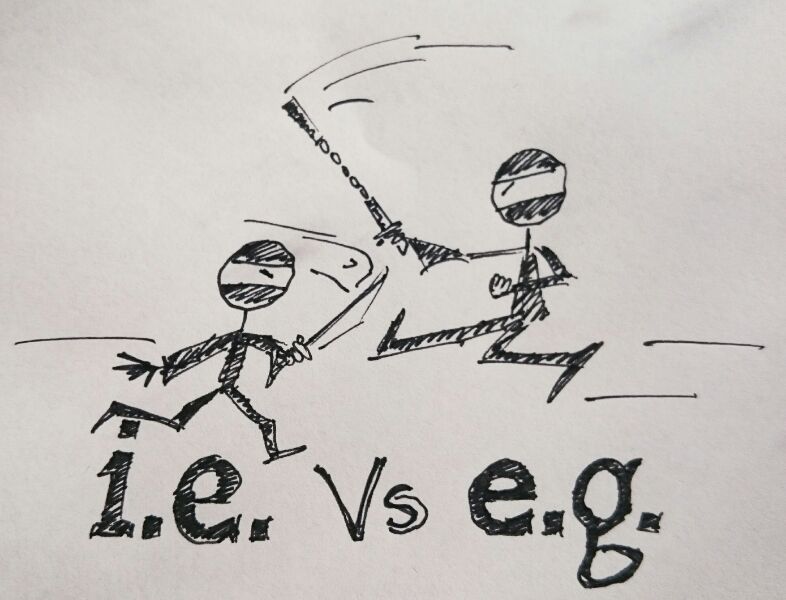After raging ad-hoc, non-traditional apostrophe abuse, one of the most common mistakes an editor sees is people using ‘i.e.’ and ‘e.g.’ interchangeably.
First things first: they are not interchangeable.
Well, they may be interchangeable in some kind of surrealist anti-grammar situation, where the desired effect is to get your reader to tear out their tongue to use as a blindfold. (Art, hey?)
In more traditional writing, however, they have distinct meanings.
Both terms are from Latin:
- e.g.—exempli gratia, or ‘for example’
- i.e.—id est, or ‘it is’ (or ‘that is’).
That there should be all you really need to know:
- Use ‘e.g.’ to introduce a list of examples. That is, a list that is not exhaustive.
- Use ‘i.e.’ to define or clarify an absolute list (even a list of 1).
For example…
- There are things I need for my personal wellbeing (e.g. sleep, food, beer, and internet).
- I like both kinds of music (i.e. Country, and Western).
Other interesting points about i.e. and e.g.
The older, more traditional, style is to add a comma after ‘i.e.’ or ‘e.g.’ In Australia, this is no longer done, generally.
Some people (like me) have a style rule where we would only use the abbreviated forms in brackets or tables. Otherwise, in running text, we’d spell out ‘for example’ or ‘that is’.
If you start a list with ‘e.g.’, you shouldn’t include ‘etc.’ at the end. This is like saying ‘for example, blah blah blah, for example’.
Another way to think about the difference is to think of ‘e.g.’ to mean ‘including’, and ‘i.e.’ to mean ‘comprises’. (Note, if you ever write ‘comprises of’, we won’t be able to be friends.)
Sorry, had to get that off my chest. This drives me nearly as mental as hearing people say ‘simplistic’ when they mean ‘simple’.








